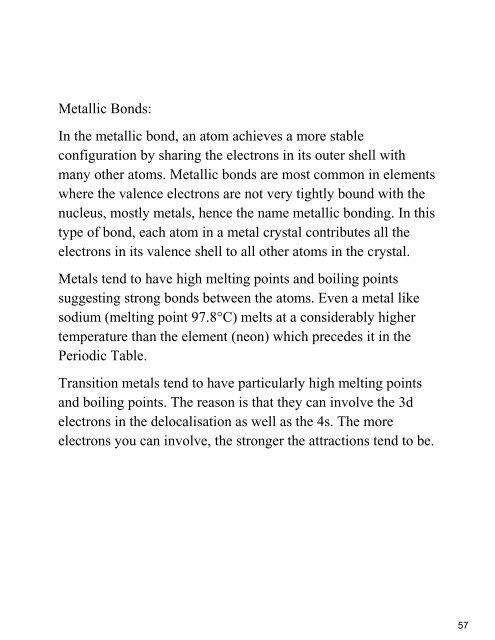You also want an ePaper? Increase the reach of your titles
YUMPU automatically turns print PDFs into web optimized ePapers that Google loves.
Metallic Bonds:<br />
In the metallic bond, an atom achieves a more stable<br />
configuration by sharing the electrons in its outer shell with<br />
many other atoms. Metallic bonds are most common in elements<br />
where the valence electrons are not very tightly bound with the<br />
nucleus, mostly metals, hence the name metallic bonding. In this<br />
type of bond, each atom in a metal crystal contributes all the<br />
electrons in its valence shell to all other atoms in the crystal.<br />
Metals tend to have high melting points and boiling points<br />
suggesting strong bonds between the atoms. Even a metal like<br />
sodium (melting point 97.8°C) melts at a considerably higher<br />
temperature than the element (neon) which precedes it in the<br />
Periodic Table.<br />
Transition metals tend to have particularly high melting points<br />
and boiling points. The reason is that they can involve the 3d<br />
electrons in the delocalisation as well as the 4s. The more<br />
electrons you can involve, the stronger the attractions tend to be.




